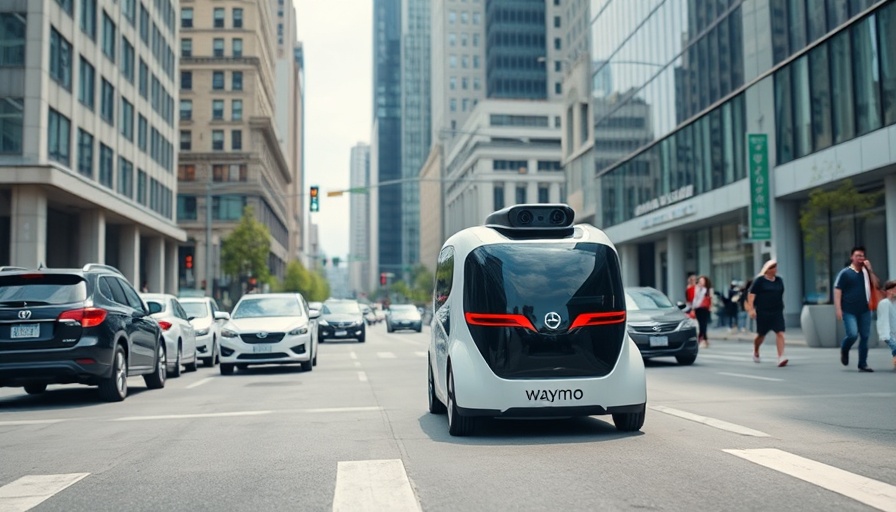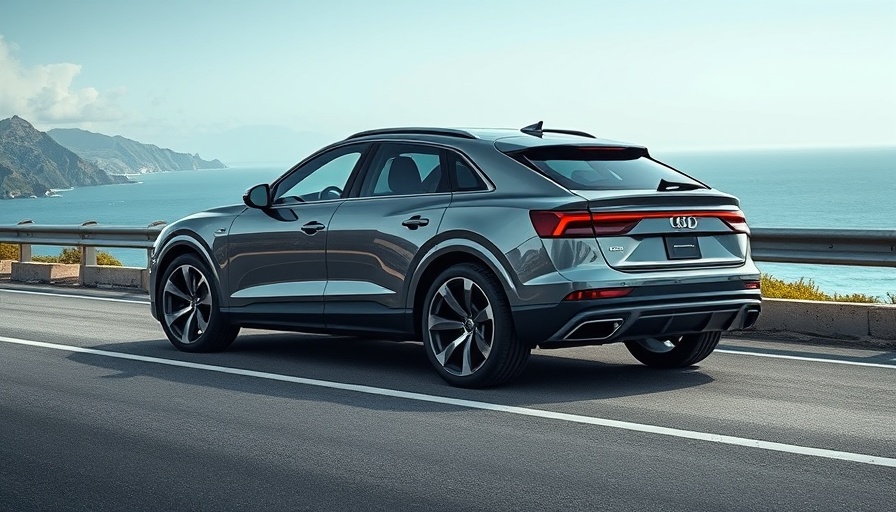
Waymo's Expansive Testing Plans for 2025
Waymo, the autonomous vehicle arm of Alphabet, is making significant strides in 2025 as it prepares to test its robotaxi service in 10 new cities, beginning with heart-thumping locations like Las Vegas and San Diego. This expansion reflects a pivotal moment in automotive technology, where the hope for autonomous vehicles (AVs) meets the reality of public acceptance. However, it's crucial to emphasize that Waymo's forthcoming tests won't immediately transition into commercial operations. Instead, the company plans to deploy fewer than 10 human-driven AVs in each city to traverse different driving conditions before assessing their performance in fully autonomous mode.
The Implications of Testing in Diverse Environments
Testing vehicles under various conditions is essential for improving the safety and reliability of AVs. With laid-back West Coast environments like San Diego contrasted against the flashing lights of Las Vegas, Waymo's venture will provide the data needed to adapt their technology to unique urban layouts. This method of gradually integrating AV systems into new cities allows Waymo to understand better how different locales may affect driving behaviors, ultimately leading to safer vehicles. After all, local road designs, weather, and traffic behaviors aren't uniform, making this testing approach critical for adaptation.
Gaining Public Trust: The Challenge of Skepticism
Despite the benefits of AV technology, public skepticism remains a significant hurdle. A 2022 Pew Research Center survey found that only 55% of Americans would feel comfortable sharing the road with driverless vehicles. This hesitation highlights the need for more data and communication regarding the safety of autonomous technologies. Studies from Waymo indicate substantial reductions in property and bodily injury claims compared to traditional human drivers; however, concerns often dominate news coverage, overshadowing these positive statistics.
Addressing Concerns and Emphasizing Safety
For instance, Waymo reported a staggering 88% reduction in property damage claims and a 92% reduction in bodily injury claims in miles traveled by its AVs when compared to human-operated vehicles. Such statistics can serve to reassure the public, indicating that with the right data collection and transparency, people may begin to feel more confident about sharing the road with automobiles that drive themselves.
Future Automotive Trends: What Lies Ahead?
As we look toward the future of automotive technology, the potential for widespread adoption of AVs seems brighter. With companies like Waymo pushing the envelope of what's possible and aiming to launch comprehensive robotic services across cities, the landscape of transportation is set to change. Additionally, as EV powertrains continue to evolve alongside robotics, we can anticipate not only better performance metrics but also improved ecological benefits. 2025 could very well become a cornerstone year for transformative advancements in the automotive industry.
Takeaway: Why You Should Care
The forward motion of companies like Waymo in testing and improving robotaxi services offers a glimpse into a future where convenience meets technology seamlessly. As automotive innovations continue to unfold, staying informed is essential. The strategies that Waymo implements in its testing will not only influence its success but could shape the future norms of urban transportation and consumer behavior on a vast scale.
 Add Row
Add Row  Add
Add 




 Add Row
Add Row  Add
Add 

Write A Comment